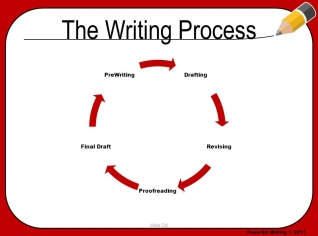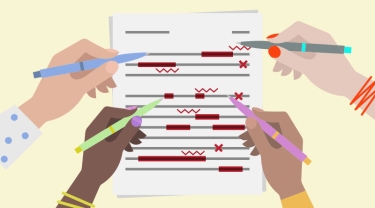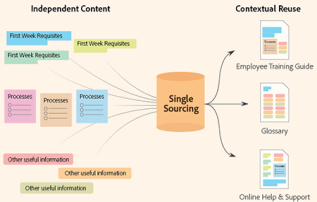Unit - 2
Technical Writing, Grammar and Editing
Here are six important steps to take in the process:
Planning
Drafting
Reviewing
Revising
Editing
Publishing/Maintaining
Narration is story telling. It involves relating a series of events, usually in a chronological order.
Description tells what things are like according to the five senses.
Exposition is the kind of writing that is used to inform.
Argument-The purpose of argument is to convince through logic

Headings and subheadings
Typographical cues
Table of contents
List of figures
Index

Start with your topic headings. Add one or more index entries for each topic heading.
Consider other words that users might look for to find these topics.
Look for keywords in each topic.
Think of synonyms for the keywords.
Brainstorm other words users might look for.
Read the completed index.
When you're talking about grammar, it's useful to know some basic terms. The following are called parts of speech and they each have their own function.
Verbs
Verbs are often known as 'doing words'. They can also show 'having' or 'being'.
For example:
The horse jumped the fence.
Nouns
Nouns are the names of people, places, things and ideas. There are four kinds of noun.
For example:
Common nouns - dog, computer, river, biscuit
Collective nouns (names of a group of something)
Adjectives
Adjectives describe nouns.
For example:
She wore a blue dress.
Adverbs
Adverbs give us extra information about how, where or when a verb happens.
For example:
He drove slowly.
Pronouns
Pronouns are usually small words which stand in place of a noun, often to avoid repeating the noun. They include words such as I, you, he, we, hers, they, it.
Prepositions
Prepositions come before nouns or pronouns and usually show a connection.
For example:
Your pen is on the desk.
Articles
There are two kinds of article: definite and indefinite.
The definite article is 'the'. It is used to identify a specific thing.
The indefinite article is 'a' and 'an'. It is used to refer to something in general.
For example:
The cat sat on the mat. (We know which cat and which mat.)
Technical Editors determine whether the writer has used the abbreviations, acronyms, and stylistic conventions specified in corporate or client guidelines.
Spell out acronyms when they appear in the document for the first time.
Eliminate jargon.
Verify that figures and table captions are in the corporate style.
Verify that font family, font size, and color palette is correct.
Verify that the language is free of gender bias.
Communicating about technical or specialized topics, such as computer applications, medical procedures, or environmental regulations.
Communicating by using technology, such as web pages, help files, or social media sites.
Providing instructions about how to do something, regardless of how technical the task is or even if technology is used to create or distribute that communication.
Pre-Kick-off meeting preparation time is important for manager to take into consideration. You can also consider the time required in preparing of the quote, negotiation time, and preparation of the agreement.
Publish your content to several different output formats - PDF, HTML, Mobile, etc.
Use the content you’ve authored in multiple contexts - e.g., reuse a piece of text (often called "topics") as building blocks to produce documentation for several products or other variants, instead of having to copy and paste.

An example of localization is converting a document written in European French to Canadian French.
There are two types of localization: general and radical.
General localization refers to superficial cultural differences, such as language, currency, and date formats. For example, someone translating a document from Spanish to English (or vice versa) would simply translate the words as closely as possible, factor in currency and date formatting changes, and correct other small inconsistencies.
Radical localization is more in-depth, incorporating cultural differences that affect the way users think, feel, and act. As an example, Nancy Hoft explains that an American document localized for a British audience, “…needs to be adapted so that it uses the British spellings of words, British axioms and expressions, currency amounts in the British pound sterling, and measurements expressed in metrics, to name a few of the changes. A further distinction would involve adapting to the reading and learning styles of the British users.
References:
1. David F. Beer and David McMurrey, Guide to writing as an Engineer, John Willey. New York, 2004
2. Diane Hacker, Pocket Style Manual, Bedford Publication, New York, 2003. (ISBN 0312406843)
3. Shiv Khera, You Can Win, Macmillan Books, New York, 2003.
4. Raman Sharma, Technical Communications, Oxford Publication, London, 2004.
5. Dale Jungk, Applied Writing for Technicians, McGraw Hill, New York, 2004. (ISBN: 07828357-4)
6. Sharma, R. and Mohan, K. Business Correspondence and Report Writing, TMH New Delhi 2002.
7. Xebec, Presentation Book, TMH New Delhi, 2000. (ISBN 0402213)